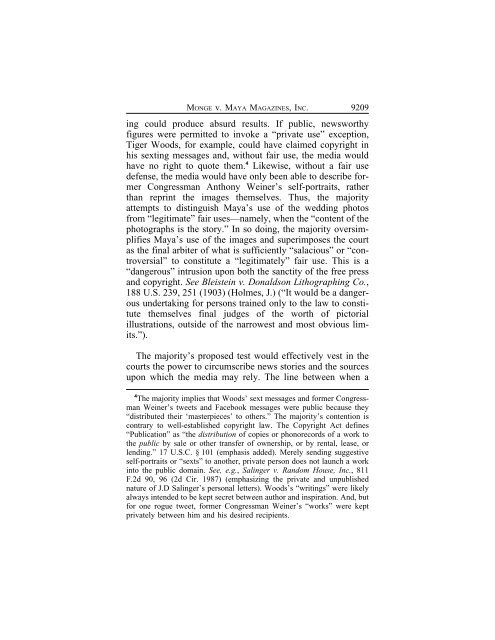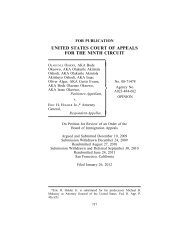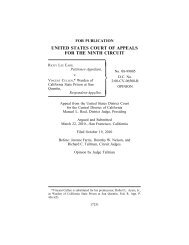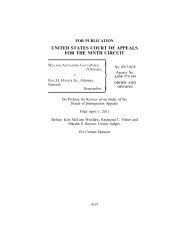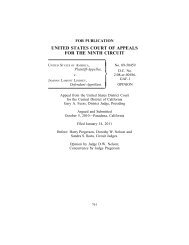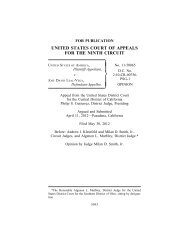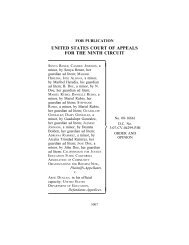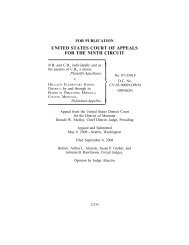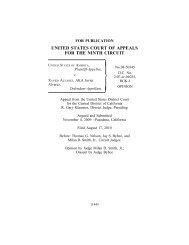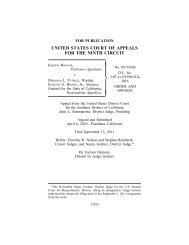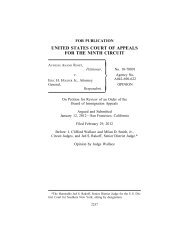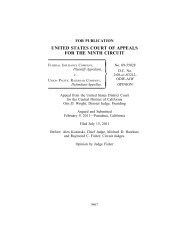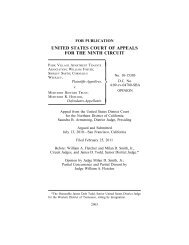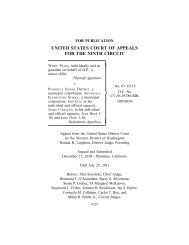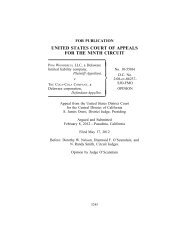NOELIA MONGE V. MAYA MAGAZINES, INC. - Ninth Circuit Court of ...
NOELIA MONGE V. MAYA MAGAZINES, INC. - Ninth Circuit Court of ...
NOELIA MONGE V. MAYA MAGAZINES, INC. - Ninth Circuit Court of ...
Create successful ePaper yourself
Turn your PDF publications into a flip-book with our unique Google optimized e-Paper software.
<strong>MONGE</strong> v. <strong>MAYA</strong> <strong>MAGAZINES</strong>, <strong>INC</strong>.<br />
9209<br />
ing could produce absurd results. If public, newsworthy<br />
figures were permitted to invoke a “private use” exception,<br />
Tiger Woods, for example, could have claimed copyright in<br />
his sexting messages and, without fair use, the media would<br />
have no right to quote them. 4 Likewise, without a fair use<br />
defense, the media would have only been able to describe former<br />
Congressman Anthony Weiner’s self-portraits, rather<br />
than reprint the images themselves. Thus, the majority<br />
attempts to distinguish Maya’s use <strong>of</strong> the wedding photos<br />
from “legitimate” fair uses—namely, when the “content <strong>of</strong> the<br />
photographs is the story.” In so doing, the majority oversimplifies<br />
Maya’s use <strong>of</strong> the images and superimposes the court<br />
as the final arbiter <strong>of</strong> what is sufficiently “salacious” or “controversial”<br />
to constitute a “legitimately” fair use. This is a<br />
“dangerous” intrusion upon both the sanctity <strong>of</strong> the free press<br />
and copyright. See Bleistein v. Donaldson Lithographing Co.,<br />
188 U.S. 239, 251 (1903) (Holmes, J.) (“It would be a dangerous<br />
undertaking for persons trained only to the law to constitute<br />
themselves final judges <strong>of</strong> the worth <strong>of</strong> pictorial<br />
illustrations, outside <strong>of</strong> the narrowest and most obvious limits.”).<br />
The majority’s proposed test would effectively vest in the<br />
courts the power to circumscribe news stories and the sources<br />
upon which the media may rely. The line between when a<br />
4 The majority implies that Woods’ sext messages and former Congressman<br />
Weiner’s tweets and Facebook messages were public because they<br />
“distributed their ‘masterpieces’ to others.” The majority’s contention is<br />
contrary to well-established copyright law. The Copyright Act defines<br />
“Publication” as “the distribution <strong>of</strong> copies or phonorecords <strong>of</strong> a work to<br />
the public by sale or other transfer <strong>of</strong> ownership, or by rental, lease, or<br />
lending.” 17 U.S.C. § 101 (emphasis added). Merely sending suggestive<br />
self-portraits or “sexts” to another, private person does not launch a work<br />
into the public domain. See, e.g., Salinger v. Random House, Inc., 811<br />
F.2d 90, 96 (2d Cir. 1987) (emphasizing the private and unpublished<br />
nature <strong>of</strong> J.D Salinger’s personal letters). Woods’s “writings” were likely<br />
always intended to be kept secret between author and inspiration. And, but<br />
for one rogue tweet, former Congressman Weiner’s “works” were kept<br />
privately between him and his desired recipients.


